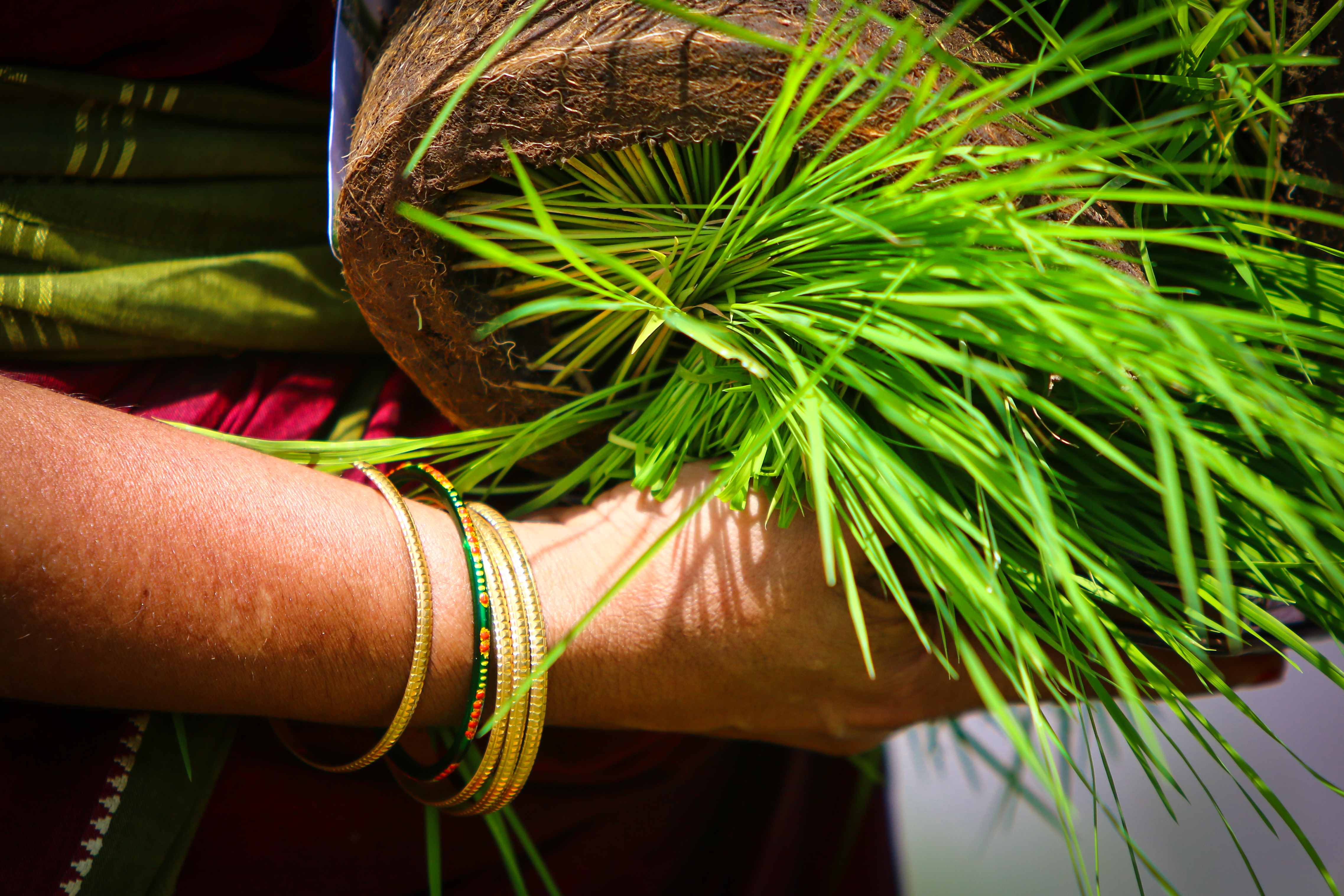Women find identity, path of progress, as farmers

Gender inclusion is one of the priorities for IRRI and hence, it received a significant focus in both research and outreach activities. In Bihar, India, adoption by women farmers of some farming technologies was thought to help interventions create more revenue and thus improve the income of farm households. Through the Cereal Systems Initiative for South Asia (CSISA), two local partners—state organization Mahila SamakhyaSociety and its Federation, and NGO Creation Welfare Society—helped involve several community resource persons on the ground to accelerate the adoption of improved technologies. These technologies support the sustainable intensification of cropping systems that allow more productivity among farm households.
Anupa, a woman farmer in Bandra block (Muzaffarpur District, Bihar) who had used a mechanical transplanting machine, said that farm technologies “save time and cost, reduce drudgery, and increase productivity.” Women farmers like Anupa, however, cited as a major challenge in the use of farm technologies their lack of skills in handling minute operational details involved in mechanization.
Over a period of two years, the women farmers were exposed to various technologies as well as training activities. We then sought to find out whether such exposure has had any impact, direct or indirect, on their lives. The impact we were looking for is on three broad areas: social, economic, and health.
By social impact, we mean improved status not only at the household but also at the community level. Among the women we studied, we found this in the form of increased self-confidence, stemming from having proper recognition—an identity—as farmers themselves. Earlier, the women would toil hard in the field, do mostly herculean tasks without any recognition. Even the women failed to identify themselves as farmers.
In one of the focus group discussions (FGDs), women farmers who have used the technologies shared about their satisfaction at now being able to contribute to the household economy. They can afford better food, can seek treatment during illness (unlike previously, when they were financially constrained from doing so), and now plan to marry off their children in a better way.
Ashrafi Devi from Bochaha block (Muzaffarpur District, Bihar) declared, “My contribution to agriculture is eventually being recognized. Both in the community and at home, people identify me as a progressive woman farmer.”
Apart from impact such as described above, it has always been a concern for us whether these interventions also strengthen the women farmers’ authority as decision-makers. We do not expect the change to be so drastic that women necessarily become the main decision-maker in their households, but we do envision them getting involved in decisions related to agriculture as a result of their training and exposure to agriculture-related activities.
Kiran Devi from Bandra block (Muzaffarpur District, Bihar) shared: “My husband is a migrant laborer. He used to come back home to farm during planting season but now that I have received knowledge and training on establishment technology, he believes I can handle it all by myself. This has increased my capacity to make decisions on my own.”
The major decision-making stages in the adoption process are:
- establishment/inception stage decisions, or input decisions (on seed, machinery, and establishment technology)
- post-establishment stage decisions, or management decisions (on nutrient, weed, pest, water management, and others)
- post-production stage decisions, or output-income decisions (on the use of harvest or income from the harvest)
The levels of decision-making authority differ by technology, e.g., in direct-seeded rice systems, most decisions are taken by the women collectively. In machine-transplanted rice systems, on the other hand, the women make decisions in the process of adoption based on rigorous discussions in self-help groups (SHGs) on the pros and cons of the technology. Then, they discuss newly learned practices with households, sharing the prospective benefits.
In the beginning, decisions made by the women on these technologies were not supported by the members of their households. Despite the challenge presented by resistance from their own households, the women went ahead with support from their own SHGs. At every stage in postharvest-related decisions, women played a crucial role either individually or in consultation with family members as well as with women collectives.
Changes have been observed in varying degrees in the knowledge, attitudes, and behavior of these women farmers, their households, and their community. The women were given exposure to group discussions and training activities, which—the women themselves reveal—have made them quite ‛outgoing.ʹ Becoming part of the SHGs started them on a path of progress and the support and intervention of projects such as CSISA acted as a trigger.